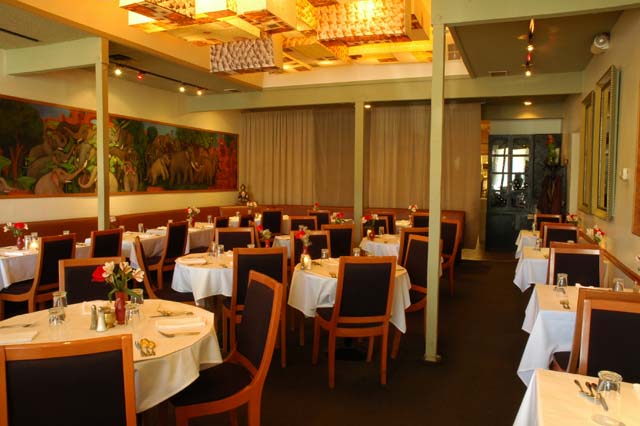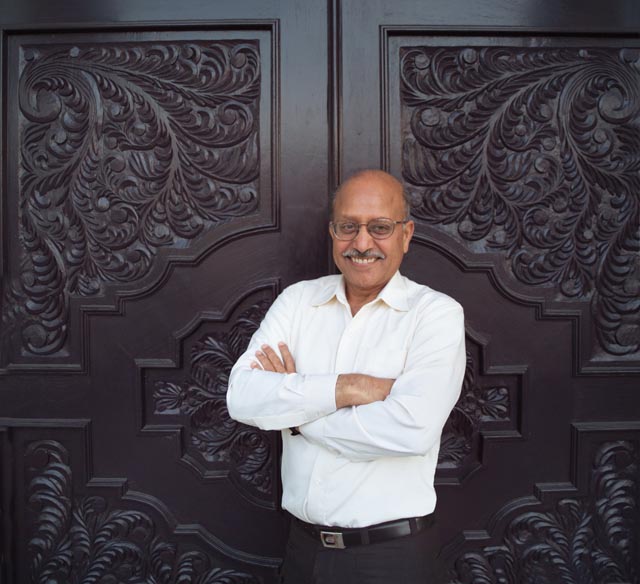
It’s been voted the best Indian restaurant in the San Francisco Bay area by the 2010 Zagat’s guide and Lachu Moorjani, an engineer turned chef and restaurateur, has made Ajanta both innovative and classic. It was one of the first Indian restaurants there to become green certified and offers sustainable seafood, hormone and antibiotic free meats, organic chicken and vegetables and uses local produce wherever possible. Meet Moorjani who loves creating fusion food but never forgets the Sindhi food he grew up with, nor the many regional dishes he explored in the varied cities in India.
Moorjani, whose family settled in Rajasthan after they fled as refugees from Pakistan in 1947, has lived in different cities and absorbed the diverse cuisines. Even now, he goes back to India to explore the regional cuisine. Besides recreating these dishes at Ajanta, Moorjani has also written a cookbook titled Ajanta: Regional Feasts of India, in which he shows you how to prepare these wonderful dishes at home.

With Lachu Moorjani in the Kitchen:
Q. Ajanta has been around since 1993. To what do you attribute its continued success?
It has innovative and sophisticated fare, offered in elegant surroundings at wallet friendly prices. I do regional dishes and offer a menu that changes every month. I go to India to visit different regions of India and to collect recipes. I offer dishes that cover at least a dozen different states in India.
I use classic recipes, but as with most chefs, I do my own interpretations. Our cooking is lighter and healthier, and I use my own proportions of spices and make changes to recipes that, I feel, will make the dishes more interesting. I also create many of the recipes, and some have become our signature dishes, such as Tandoori Asparagus and Tandoori Portobello Mushrooms. The meaty flavor and the soft texture of this appetizer reminds my wife of foie gras. At the restaurant, we cook it in the extremely hot tandoor oven; at home, I cook it on a hot grill.
Q: Are you seeing more Americans coming to the restaurant and do they seem better educated about Indian food?
Ajanta is located in an area that is generally out of the way and not frequented by Indians, so we have always attracted more Americans. In general, I think Indian food continues to grow in popularity among Americans. Berkeley is a university town, so the diners include many U C Berkeley professors and staff. Most of my customers are highly educated and well read. They often mention reading about benefits of consuming turmeric and mustard seeds for prevention of Alzheimer’s. They also want to eat organic, sustainable and local.
Q: Have you changed your menu to fusion or do you keep to the classics?
I have stayed with classics in my main dishes, but I have introduced many innovative dishes in appetizer section. These include Tandoori Portobello Mushrooms, Tandoori Scallops, Tandoori Asparagus, and Crab Cakes, which have been very popular.
When my customers ask me if this is fusion, my answer generally has been that if Asparagus or Portobello Mushrooms were available in India, this is how I would have cooked them. I have often wondered about the exact definition of fusion cooking.
Q: What tips would you offer cooks for healthy cooking.
Use less oil. In my own cooking experience very early on, I found out that using non-stick pots allowed me to cook with a lot less oil. In my cookbook and cooking classes, I have promoted this idea. I also recommend using expeller pressed canola oil, which I think is healthier oil.
Q: Any shortcuts in the kitchen which can benefit readers?
I generally do not like shortcuts, especially in cooking, if it compromises final outcome. For prepping – cutting, chopping, kneading dough – I am all for using food processors and blenders. At home, I often make a large batch of chapatti dough in a food processor -which hardly takes a couple of minutes – save it in the fridge and use it to make fresh chapatis or parathas for next three or four days.
